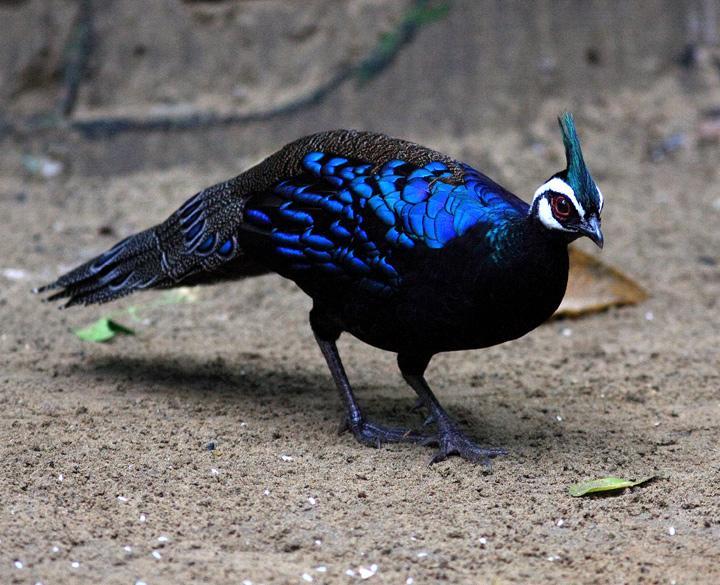
The Palawan Peacock-Pheasant, Polyplectron napoleonis, is a medium-sized (up to 50 cm long) bird in the family Phasianidae. It was long known as Polyplectron emphanum (Dickinson 2001).
The male is the handsomest and most peacock-like member of the genus Polyplectron. It has an erectile crest, a white stripe over the eyes and highly iridescent metallic green and black plumage. The tail feathers are decorated with large blue-green ocelli, which may be spread fanlike in courtship displays. The female is smaller than the male. It has a dark brown plumage with a short crest and is whitish on the throat, cheeks and eyebrows.
Distribution and habitat
Endemic to the Philippines, the Palawan Peacock-Pheasant is found in the humid forests of Palawan Island in the southern part of the Philippine archipelago. The female usually lays up to two eggs.
Taxonomy
The Palawan Peacock-Pheasant, with its unique male plumage and distant range, represents a basal (Early? Pliocene, c.5-4 mya) offshoot of the genus Polyplectron (Kimball et al. 2001).
Status and conservation
Due to ongoing habitat loss, small population size and limited range as well as hunting and capture for trade, the Palawan Peacock-Pheasant is classified as Vulnerable in the IUCN Red List of Threatened Species. It is listed on Appendix I of CITES.










